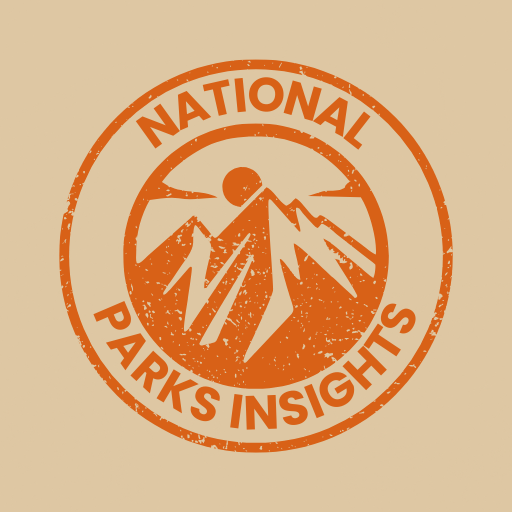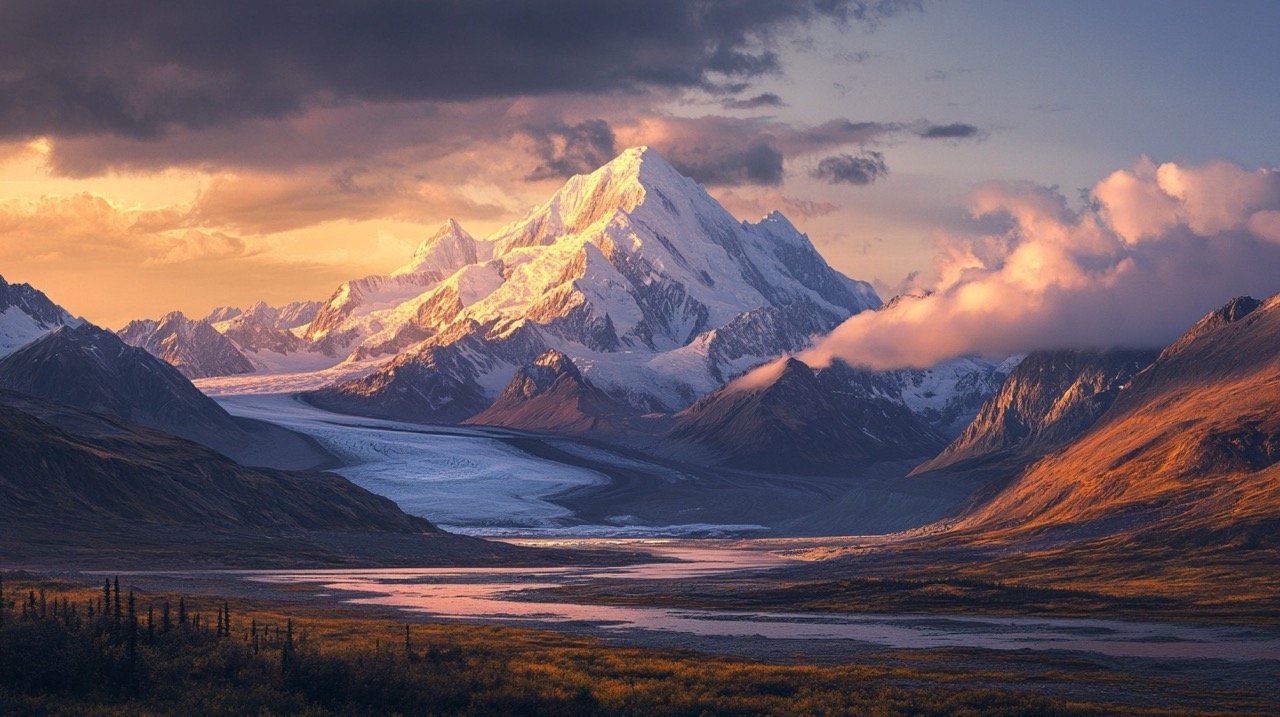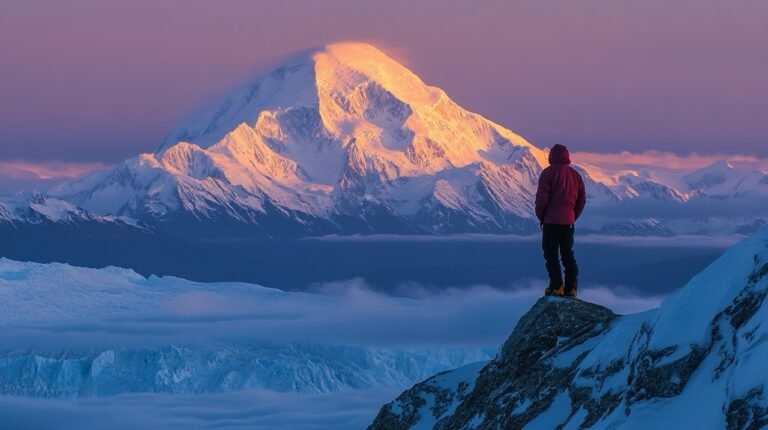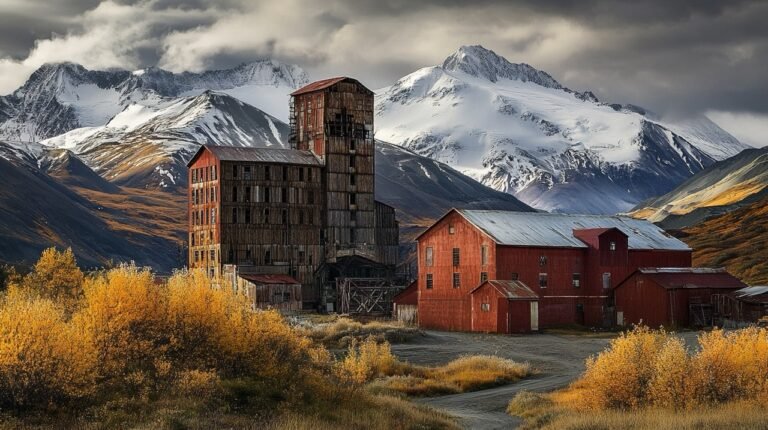Adventure Awaits in Wrangell St. Elias National Park
A Massive Playground
As of 2024, Wrangell-St. Elias National Park continues to be the largest national park in the United States, covering an impressive 13.2 million acres. Recent climate studies have shown that the park’s glaciers are retreating at an accelerated rate, highlighting the urgent need for conservation efforts in this pristine wilderness.
Wrangell St. Elias National Park & Preserve in south-central Alaska is the biggest national park in the U.S., covering a jaw-dropping 13.2 million acres. To put that in perspective, it’s bigger than Yellowstone, Yosemite, and Switzerland combined. This place is a haven for wildlife, with minimal human interference and habitats ranging from temperate rainforests to tundra.
The park stretches from sea level up to 18,008 feet, boasting some of North America’s largest volcanoes and a huge concentration of glaciers. This crazy elevation range means you get a mix of ecosystems and wildlife. Whether you’re into bird watching, checking out big mammals, or exploring marine life, Wrangell St. Elias has got you covered.
In recent years, the park has seen an increase in winter visitation, with more adventurous travelers seeking unique experiences like ice climbing on frozen waterfalls and northern lights viewing. The park now offers guided winter excursions from December to March, providing a whole new perspective on this vast wilderness.
| Park Size Comparison | Acres | Square Miles |
|---|---|---|
| Wrangell St. Elias | 13,175,799 | 20,587 |
| Yellowstone | 2,219,791 | 3,472 |
| Yosemite | 761,747 | 1,189 |
| Switzerland | 9,000,000 | 15,940 |
Getting There
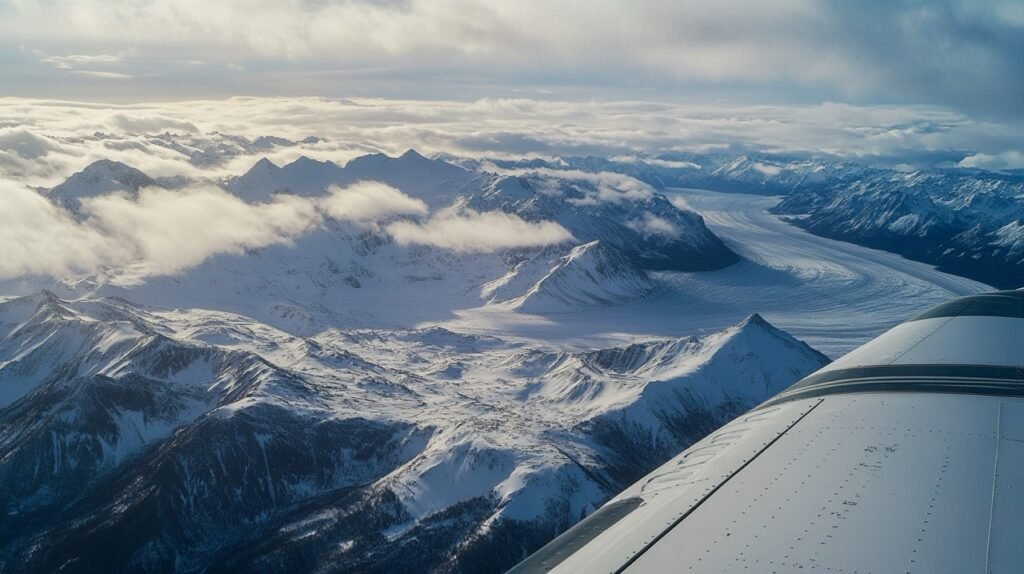
Getting to Wrangell St. Elias National Park is part of the adventure. The park has limited road access, with only about 100 miles of roadways in its 13 million acres. But don’t worry, there are a few ways to get to this untouched wilderness.
Visitors should note that as of the 2024 season, the National Park Service has implemented a new shuttle system from Chitina to McCarthy during peak summer months. This service aims to reduce traffic on the McCarthy Road and provide a more sustainable transportation option for park visitors.
By Car:
Drive to the park through two main entrances: Nabesna Road and McCarthy Road. These routes offer scenic drives and access to different parts of the park. For more details, check out our articles on Nabesna Road and McCarthy Road.
By Air:
Charter flights from Anchorage, Fairbanks, and other Alaskan cities are available. These flights not only get you there faster but also offer breathtaking aerial views of the park, including Mount St. Elias.
By Rail:
There are no direct trains to the park, but you can take the Alaska Railroad to nearby towns like Anchorage or Fairbanks and then continue by car or plane.
For more tips on planning your visit, including essential safety tips and guided tours, check out our visitor resources section.
Exploring Wrangell St. Elias National Park is a chance to experience one of the most untouched and diverse places on Earth. Whether you’re hiking, rafting, or just soaking in the natural beauty, your adventure awaits in this incredible Alaskan wilderness.
Click here to see Beautiful Hotel Options at Wrangell St. Elias
Points of Interest
Nabesna Road
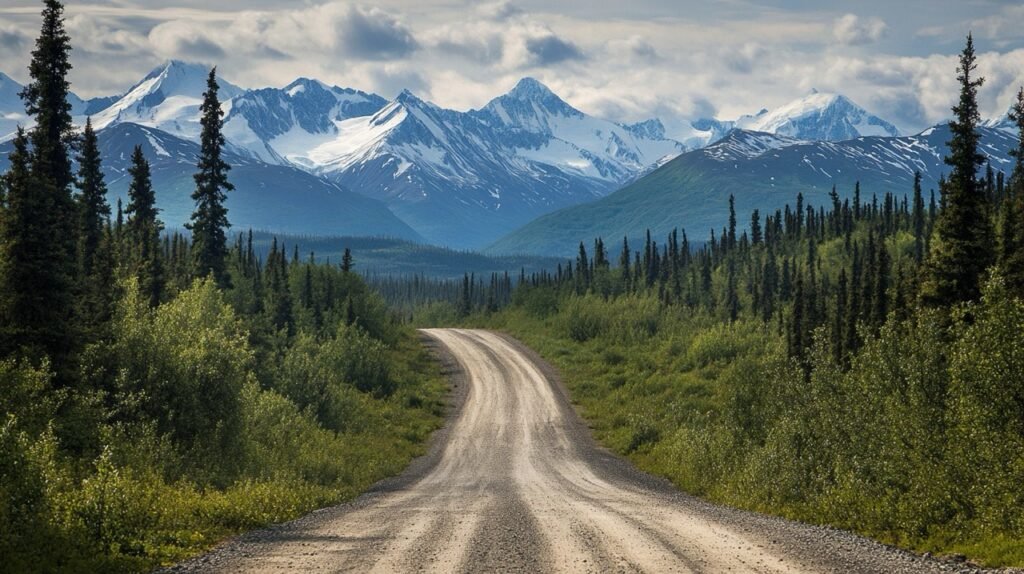
Nabesna Road is one of the two main ways to get into Wrangell St. Elias National Park. This 42-mile unpaved road takes you through some jaw-dropping scenery and opens up a world of outdoor fun. Along the way, you’ll find trails, campgrounds, and plenty of chances to see wildlife.
| Feature | Details |
|---|---|
| Length | 42 miles |
| Road Type | Unpaved |
| Access Points | Trails, Campgrounds, Wildlife Viewing |
Driving down Nabesna Road is like stepping into the wild. Don’t forget to stop by the Slana Ranger Station for maps and the latest road conditions. For more tips on exploring Wrangell St. Elias, check out our page on Wrangell St. Elias Alaska.
McCarthy Road
McCarthy Road runs for 60 miles and takes you right into the heart of the park. This historic road follows the old Copper River and Northwestern Railway, giving you a peek into the area’s rich past. The road ends in the towns of McCarthy and Kennicott, where you’ll find various amenities and cool spots to check out.
| Feature | Details |
|---|---|
| Length | 60 miles |
| Road Type | Gravel |
| End Points | McCarthy, Kennicott |
At Milepost 59, you’ll come across the McCarthy Road Ranger Station. It’s a great spot to get your bearings. Friendly park rangers and volunteers are there to answer questions and provide info about parking and shuttle services. Learn more about the largest national park in the United States and the adventures that await you.
Kennecott Mines
The Kennecott Mines are a must-see in Wrangell St. Elias National Park. This National Historic Landmark was a bustling copper mine in the early 1900s. The copper was transported by railroad along the Chitina and Copper rivers to ships at Cordova. Today, the ruins of the Kennecott Mines offer a fascinating look into the past.
| Feature | Details |
|---|---|
| Established | Early 1900s |
| Status | National Historic Landmark |
| Activity | Copper Mining |
You can wander through the well-preserved structures and learn about the history of the mining company. Guided tours are available, giving you a deeper understanding of the site’s significance. Discover more about the Kennecott Mines and their role in shaping the region’s history.
Visiting these spots will make your adventure in Wrangell St. Elias National Park unforgettable. Plan your trip and check for any updates or advisories before heading out. Enjoy the natural beauty and historical richness that this incredible park has to offer.
Wildlife and Habitats
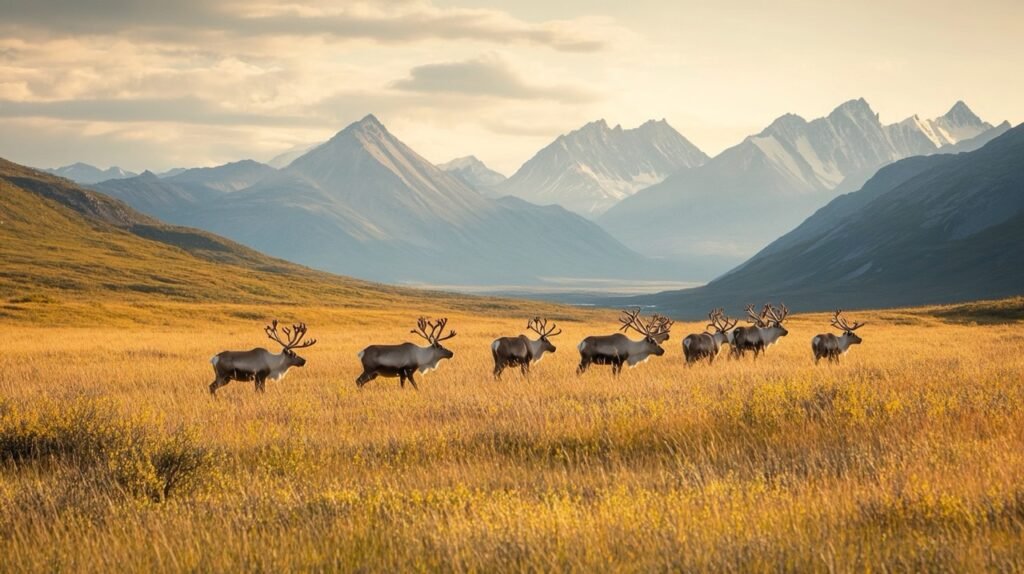
Step into the wild wonderland of Wrangell St. Elias National Park, where nature’s drama unfolds daily. This massive park is a haven for animal lovers, offering a front-row seat to some of the most fascinating creatures in their natural homes.
Big Beasts
Wrangell St. Elias is a playground for North America’s heavyweight champs. You’ll find Dall sheep scaling cliffs, moose munching on foliage, and bears—both brown and black—roaming the terrain. Mountain goats, caribou, and two bison herds also call this place home.
| Big Beast | How Often You’ll See Them |
|---|---|
| Dall Sheep | Often |
| Moose | Sometimes |
| Bears | Varies (Brown and Black Bears) |
| Mountain Goats | Sometimes |
| Caribou | Sometimes |
| Bison | Two Transplanted Herds |
Curious for more? Check out our page on Wrangell St. Elias Alaska for the full scoop.
Sea Critters
The coastal zones of Wrangell St. Elias are bustling with marine life. Keep your eyes peeled for sea lions lounging on rocks, harbor seals popping up for air, and sea otters floating by. You might even spot porpoises and whales making waves.
| Sea Critter | Where to Spot Them |
|---|---|
| Sea Lions | Coastal Areas |
| Harbor Seals | Coastal Areas |
| Sea Otters | Coastal Areas |
| Porpoises | Coastal and Open Waters |
| Whales | Coastal and Open Waters |
Want to dive deeper? Explore the park’s marine life with guided tours and other visitor resources.
Feathered Friends
Bird watchers, rejoice! Wrangell St. Elias is a birding paradise. The Copper River Basin and Yakutat Bay are hotspots for migratory birds. Wetlands are teeming with geese, trumpeter swans, ducks, and other waterfowl. And don’t forget to look up—golden and bald eagles soar high above.
| Bird | Where They Hang Out |
|---|---|
| Geese | Wetlands |
| Trumpeter Swans | Wetlands |
| Ducks | Wetlands |
| Golden Eagles | All Over the Park |
| Bald Eagles | All Over the Park |
For bird-watching tips and prime locations, check out our resources on Wrangell St. Elias National Park.
Don’t miss out on the park’s rich history. Swing by the historical Kennecott Mines and dive into the cultural heritage of Mount St. Elias.
Click here to see Beautiful Hotel Options at Wrangell St. Elias
Outdoor Fun at Wrangell St. Elias National Park
Get ready for some serious outdoor fun at Wrangell St. Elias National Park! Whether you’re a hiking fanatic, a rafting junkie, or just curious about glaciers, this park has got you covered.
Hiking and Climbing
Hiking and climbing here are like stepping into a nature lover’s dream. The park’s wild expanse offers trails for everyone, from easy strolls to hardcore treks. Check out the Root Glacier Trail for some jaw-dropping blue ice formations. If you’re up for a challenge, try climbing peaks like Mount St. Elias.
As of 2024, the park has introduced a new backcountry permit system for overnight hikers to help manage the growing number of visitors and protect sensitive ecosystems. Permits can be obtained online or at the park’s visitor centers.
| Trail Name | Difficulty | Distance |
|---|---|---|
| Root Glacier Trail | Moderate | 4 miles |
| Bonanza Mine Trail | Hard | 9 miles |
| Skolai Pass | Hard | 22 miles |
Don’t forget your gear and be ready for the weather to change its mind.
Rafting Adventures
Rafting in Wrangell St. Elias is a wild ride! St. Elias Alpine Guides offer trips on glacier-fed rivers and icy lakes. Whether you’re a newbie or a pro, they’ve got something for you. Trips range from quick half-day jaunts to epic 15-day expeditions. No experience? No problem. They provide all the gear.
| Trip Type | Duration | Difficulty |
|---|---|---|
| Half-Day Rafting | 4 hours | Easy |
| Full-Day Rafting | 8 hours | Moderate |
| Multi-Day Expedition | 3-15 days | Hard |
You’ll float through stunning Alaskan wilderness, with a chance to spot some amazing wildlife.
Glacier Tours
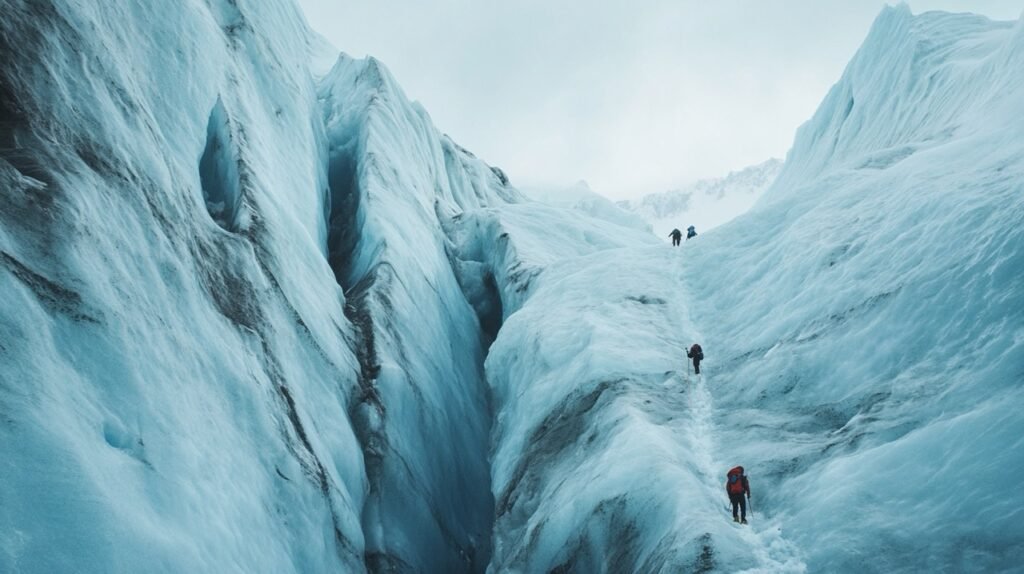
You can’t visit Wrangell St. Elias without checking out the glaciers. Kennicott Wilderness Guides offer guided hikes and ice climbs on the breathtaking Root Glacier. You’ll see blue ice, canyons, and moulins—it’s an experience you won’t forget.
| Tour Type | Duration | Difficulty |
|---|---|---|
| Glacier Hike | 3-4 hours | Moderate |
| Ice Climbing | 6-8 hours | Hard |
If you’d rather see it all from above, Wrangell Mountain Air offers scenic flights over the park, showing off North America’s biggest collection of glaciers and peaks over 16,000 feet.
For more info on planning your adventure and other cool stuff to do, check out the Wrangell St. Elias Alaska page. Don’t miss out on exploring the largest national park in the U.S. with these awesome outdoor activities.
Visitor Resources
Ready to make your trip to Wrangell St. Elias National Park unforgettable? Here’s the lowdown on what you need to know before you go.
Ranger Stations
Ranger stations are your go-to spots for all the info you need. You’ll find them at Copper Center, Kennecott, Slana, Chitina, and Yakutat. Here’s what each one offers:
| Ranger Station Location | Services Offered |
|---|---|
| Copper Center | Visitor info, self-guided tours, science publications |
| Kennecott | Visitor info, guided tours |
| Slana | Visitor info, permits |
| Chitina | Visitor info |
| Yakutat | Visitor info |
The McCarthy Road Ranger Station at Milepost 59 is a must-stop if you’re heading to McCarthy or Kennicott. The rangers and volunteers there are super helpful and can give you the scoop on parking and shuttle services.
Guided Tours
Want to see the park like a pro? Check out these guided tours:
-
- Wrangell Mountain Air: Take to the skies for jaw-dropping views of glaciers and peaks over 16,000 feet.
- Kennicott Wilderness Guides: Get up close and personal with the Root Glacier. Think blue ice, pools, canyons, and moulins.
- St. Elias Alpine Guides: Rafting on glacier-fed rivers and lakes. They’ve got gear for all experience levels.
For more details, visit wrangell st. elias alaska.
Safety Tips
Safety first, folks! Here’s how to stay safe in this wild and remote park:
-
- Plan Ahead: Check the weather, know the terrain, and pack the right gear.
- Stay Informed: Stop by a ranger station for updates on trails, wildlife, and safety tips.
- Use Proper Gear: Dress right and bring the right equipment. For glacier hikes, crampons and ice axes are a must.
- Wildlife Awareness: Keep your distance from animals and don’t feed them.
- Emergency Preparedness: Carry a map, compass, and GPS. Know where you are and have a backup plan.
For more safety tips, visit mount st. elias.
By using these resources, you’re set for an epic adventure in Wrangell St. Elias National Park. Whether you’re checking out the historic kennecott mines or hitting the rapids, this park has something for everyone. Enjoy!
Click here to see Beautiful Hotel Options at Wrangell St. Elias
Historical Sites
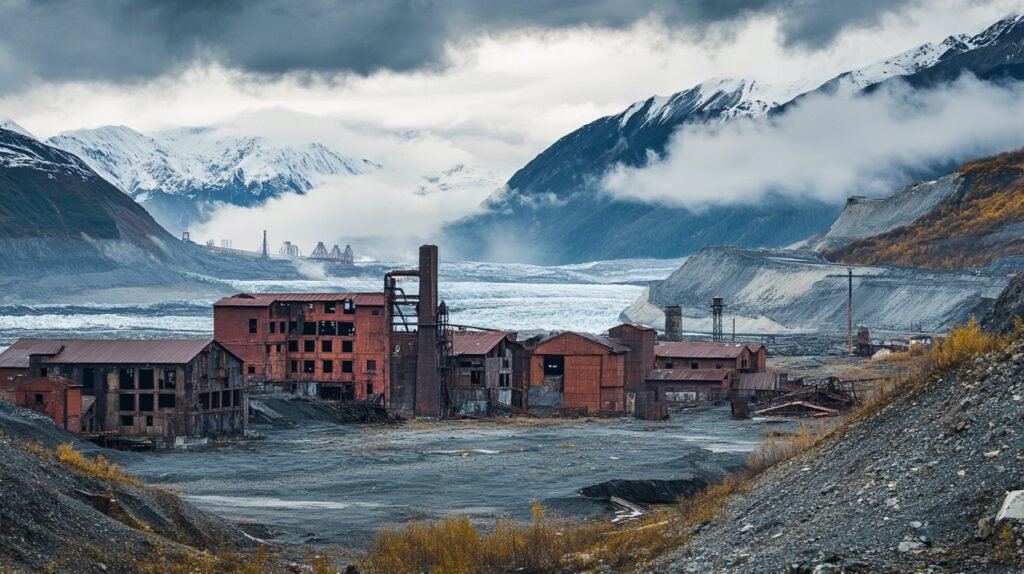
Wrangell St. Elias National Park isn’t just a paradise for nature buffs; it’s a goldmine of history. From old mining tales to pioneer stories and rich cultural heritage, this park offers a fascinating peek into the past.
Mining History
Back in the early 1900s, the Kennecott Mining Company was a big deal, pulling copper out of the ground near McCarthy. These mines, now just ruins, are on the National Register of Historic Places. They give you a glimpse of the bustling mining days from over a century ago. Check out the Kennecott Mines and see what’s left of this once-booming industry.
| Year | Event |
|---|---|
| 1899 | Copper deposits discovered on Bonanza Ridge |
| 1911 | Copper production kicks off after railroad completion |
| 1938 | Mining operations stop due to depleted deposits |
Pioneer Settlements
Gold and copper discoveries in the late 1800s drew the first pioneers to the McCarthy/Kennicott area. Copper found on Bonanza Ridge in 1899 led to mining operations. Kennicott became a company town for miners, while McCarthy sprang up as a support community with hotels, hospitals, shops, schools, and saloons.
| Key Sites | Description |
|---|---|
| Kennicott | Company town for miners |
| McCarthy | Support community with various services |
Cultural Heritage
After the last train left Kennicott, the idea of creating Wrangell St. Elias National Park started to take shape. It became a National Monument in 1978 and a World Heritage Site in 1979. In 1980, President Jimmy Carter designated 13.2 million acres as Wrangell St. Elias National Park and Preserve.
Tourism began to pick up in the 1970s and has been growing ever since, helping the local economy and preserving the area. The park’s rich cultural heritage is a testament to the grit and determination of the early settlers and miners.
Dive deeper into the Wrangell St. Elias Alaska and the largest national park in the United States to truly appreciate the historical and cultural significance of this vast wilderness.
